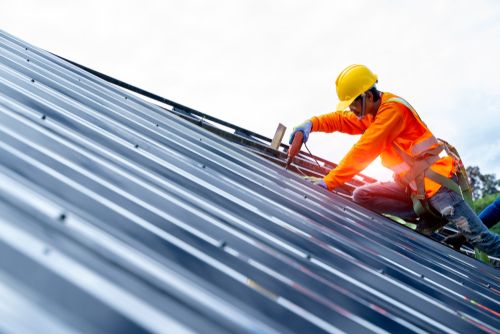
Fall Precautions Every Roofer Should Take
Slips, trips, and falls are deadly from heights, and roofers should take extra care the next time they shimmy up a ladder to install a new roof or re-roof a damaged structure. Roofing is one of the most dangerous jobs in America and regularly falls within the top ’20 deadliest jobs’ in the nation. The risks are real, as are these five fall precautions that roofers can follow to stay safe on the job site.
1. Determine Structural Integrity
Dry rot can make a roof structurally unsound. One misstep and a roofer can fall through the roof and onto the floor below. Similarly, loose shingles, damaged eaves, and other failed roofing elements may appear safe but can slip and detach when a roofer’s full body weight is placed upon it.
2. Install Anchorages
Every roofer should install secure anchorages on a roof at the start of the job. When connected to roof arrest systems, these anchorages limit the potential fall to a few feet. Moreover, OSHA regulations require it when workers are operating at heights greater than 6 feet. This significantly reduces the potential for serious injuries, including traumatic brain injury, concussions, broken bones, etc.
3. Inspect Personal Fall Arrest Systems (PFAS) Before Use
The anchorage, harness, and lanyard of every PFAS should undergo a thorough inspection every time it is used. Any damaged or worn components should be promptly repaired or replaced.
4. Never Work Alone
Even the best-laid plans can fall foul of unexpected events. Lifelines can snap, materials can slip, and traction can give way. Roofers who slip and fall have a better chance of survival if someone is available to make immediate contact with first responders.
5. Maintain Roofing Tools and Equipment
Ladders, nail guns, hoses, and cords that malfunction can cause a roofer to lose their footing. As with PFAS, every tool in the roofer’s kit should undergo a thorough check before it goes up to the roof. Any damaged equipment should be left safely in the back of the truck where it can’t cause any harm.
Contact Sloat, Nicholson & Hoover, P.C. at (303) 447-1144 for more information about fall precautions that roofers and other construction professionals in Colorado should take to keep themselves safe. We are happy to help you stay safe as you provide your services to homeowners and businesses in Boulder and along the Front Range.
Related Articles
Articles and information to keep you up to date on personal injury news.
How Long Does It Take to Settle a Rear-End Accident in Colorado?
Rear-end accidents are among the most common types of car crashes, often leading to injuries, property damage, and financial stress for victims. If you’ve been involved in such
Read More
Who Is at Fault in a T-Bone Accident in Colorado?
T-bone accidents, also known as side-impact collisions, occur when one vehicle strikes the side of another at a perpendicular angle, forming a “T” shape. These collisions are often
Read More
Top Recommended Boulder Car Accident Attorneys
Choosing the right car accident lawyer in Boulder can profoundly influence the outcome of your case and your overall recovery. Sloat, Nicholson & Hoover, P.C. is widely recognized
Read More
